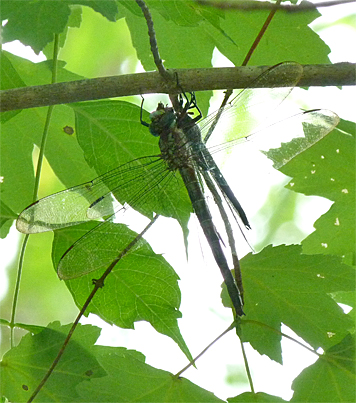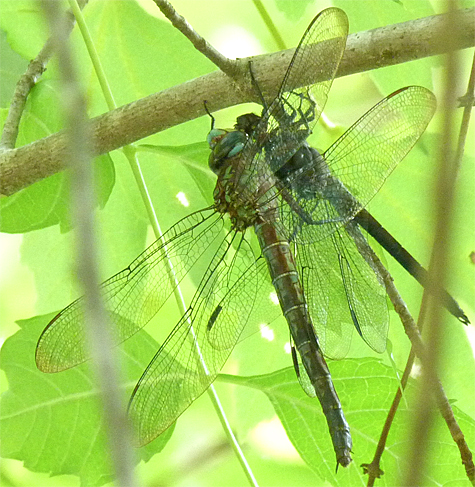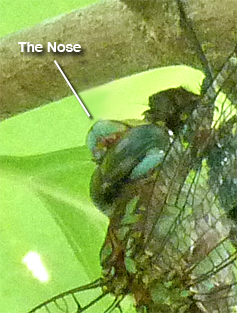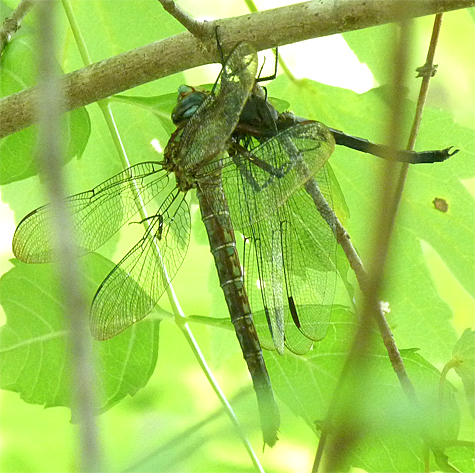It’s been nearly two weeks since I last posted to the Journal. The reason for my absence has to do with migration. No, not the migration of ?birds or some other wildlife, but of computer files from one server to another. Migration now appears to be over and hopefully there are no lingerers. On to the good stuff!
============
At around 12:30 on July 19, while seeking shady shelter from the searing sun, I noticed a large dragonfly carrying another smaller dragonfly up into the trees. I was standing under the canopy in the northeast corner of the Wetlands.
I had put away my camera (it was just too hot to think about photography). I ran to get the camera. It was only thirty feet away.

The large dragonfly was obviously a darner, but which one. The first thing that I noticed about the dragonfly was the rather bulbous projection that was its face. The nose has it.


The large dragonfly was a Cyrano Darner (Nasiaeschna pentacantha) and it had a firm grip on a Slaty Skimmer (Libellula incesta).
The darner gets its name from the large nose-like face `a la Cyrano de Bergerac. What’s Cyrano de Bergerac? The question should be, WHO is Cyrano de Bergerac? Google it, you’ll get many links. If you don’t feel like typing here’s one link to an image for you to gaze upon. But, I would go ahead and Google it for yourself to get the whole picture.

By the way, this dragonfly is a new species for the Museum. It’s number 34 on the list of species that I’ve recorded here.
============
Speaking of migration, bird migration is definitely underway, if it indeed ever ends. I don’t think that there’s one month out of the year that some species of bird is not moving north or south. But that’s a topic for another time.
As for what’s happening now, some shorebirds are moving south as well as early migrant warblers. Some of our swallows are massing together into flocks and forming roosts. So, keep an eye out.